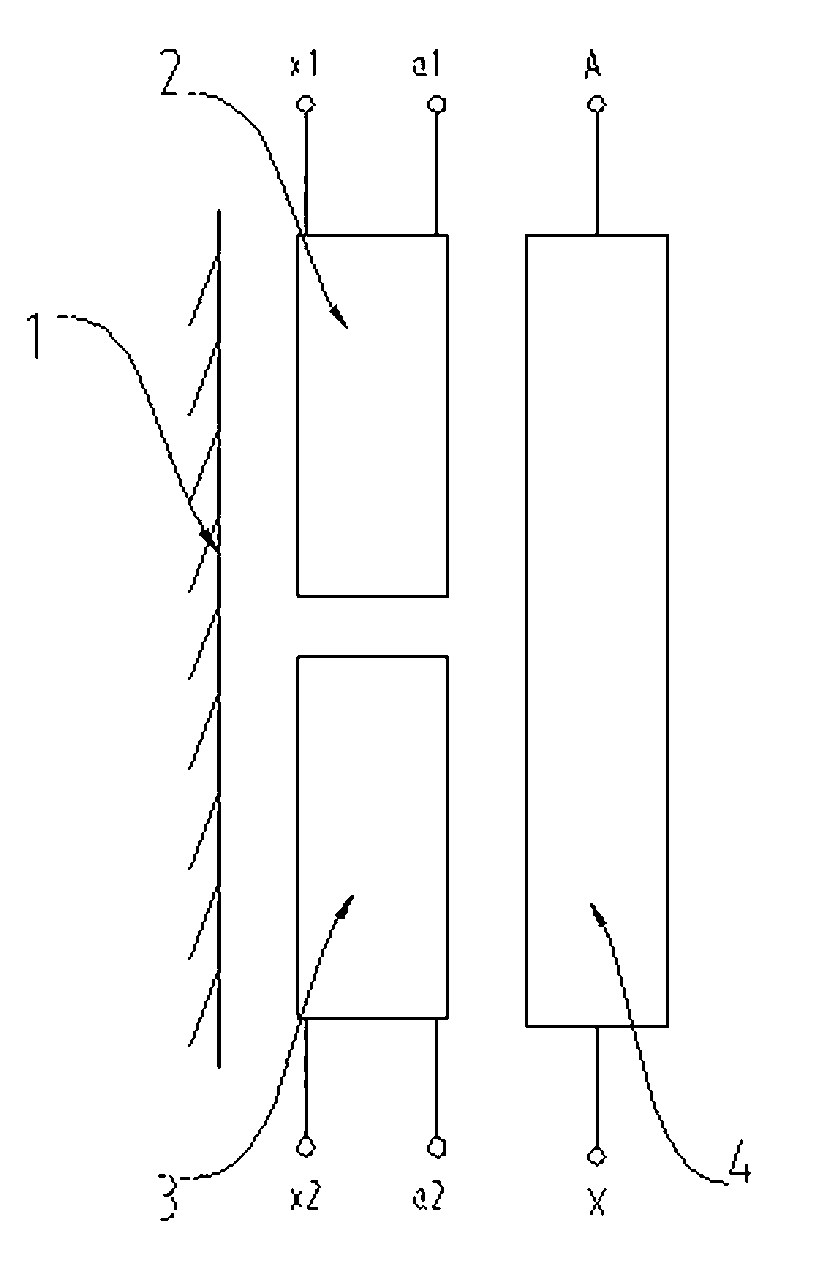Winding structure of transformer
A winding structure and transformer technology, applied in the direction of transformer/inductor coil/winding/connection, etc., can solve the problems of increased insulation distance, increased main material consumption, poor heat dissipation, etc., to achieve small insulation distance, high efficiency, and convenient wiring Effect
- Summary
- Abstract
- Description
- Claims
- Application Information
AI Technical Summary
Problems solved by technology
Method used
Image
Examples
Embodiment
[0019] refer to figure 1 As shown, the winding structure of the transformer includes a high-voltage winding 4, a low-voltage winding located between the iron core 1 and the high-voltage winding 4, and the low-voltage winding includes an upper low-voltage winding 2 and a lower low-voltage winding 3. Wherein, the upper low-voltage winding 2 and the lower low-voltage winding 3 are arranged in parallel along the axial direction of the transformer, and the high-voltage winding 4 is wound continuously.
[0020] The upper low-voltage winding 2 and the lower low-voltage winding 3 are wound with copper foil. And the first and last heads a1 and x1 of the lead wires of the upper low-voltage winding 2 are drawn from the upper part of the winding, the first and last joints a2 and x2 of the lead wires of the lower low-voltage winding 3 are drawn from the lower part of the winding, and the first and last joints A of the lead wires of the high-voltage winding 4 , X are drawn from the up...
PUM
 Login to View More
Login to View More Abstract
Description
Claims
Application Information
 Login to View More
Login to View More - R&D
- Intellectual Property
- Life Sciences
- Materials
- Tech Scout
- Unparalleled Data Quality
- Higher Quality Content
- 60% Fewer Hallucinations
Browse by: Latest US Patents, China's latest patents, Technical Efficacy Thesaurus, Application Domain, Technology Topic, Popular Technical Reports.
© 2025 PatSnap. All rights reserved.Legal|Privacy policy|Modern Slavery Act Transparency Statement|Sitemap|About US| Contact US: help@patsnap.com

